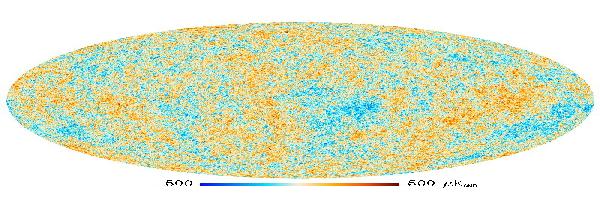 Mercredi 9 juillet à 14h, salle 114
Mercredi 9 juillet à 14h, salle 114
Kanako Yamazaki (Institute of physics, University of Tokyo, Japan) : Quark-hadron phase transition in effective models
Quantum Chromo Dynamics (QCD) is the fundamental theory which describes the
strong interaction. QCD has the rich phase structure, and each phase changes
to another phase due to the change of the temperature and/or the chemical
potential. The important phase transitions are the chiral phase transition
and the confinement transition. I will talk how to describe these phase
transitions in effective models, and show some results of equations of
state.
 Mercredi 11 juin à 14h, salle 114
Mercredi 11 juin à 14h, salle 114
Victor Ilisie (LPT Orsay & Instituto de Física Corpuscular (IFIC), Valencia) : Bounds on Neutral and Charged Higgs from the LHC
After the recent discovery of a boson with mass around 125 GeV with Standard Model-like properties, the possibility of an enlarged scalar sector arises as a natural question. The discovery of an extra scalar would be the ultimate proof of this scenario. Keeping the generic Yukawa structure of the Aligned Two-Higgs Doublet Model framework, we study the implications of the LHC data on the allowed scalar spectrum
 Mardi 27 mai à 14h, salle 114
Mardi 27 mai à 14h, salle 114
Xavier Busch (LPT Orsay) : Dynamical Casimir Effect in Bose-Einstein Condensates
Bose-Einstein condensates allow analogue gravity to be experimentally tested for, mainly because of their low temperature. The quasiparticles are however produced both by classical amplification of waves and spontaneous production from the vacuum. Our aim is to characterize when the former case dominates over the latter.
We introduce the formalism for Bose-Einstein condensates that allows us to describe phonons. We then consider two kinds of dynamical Casimir effects, one due to a sudden change and the other due to time modulation of the speed of sound. Nonseparability of the final state is characterized. Finally, we introduce some dissipation and study its effects on nonseparability.
 Vendredi 14 mars à 14h, salle 114
Vendredi 14 mars à 14h, salle 114
Pierre Clavier (LPTHE Paris) : Solving Schwinger-Dyson equation : from perturbative solution to the Borel plane
We study the Schwinger-Dyson equation of the massless Wess-Zumino model
which gives the (fully renormalised) anomalous dimension of the theory. We
are looking for the big N behaviour of the perturbative solution. Then,
sub-dominant contributions to this asymptotic behaviour are found using a
sum over all the poles of the Mellin transform of the one loop diagram. We
will then show that this computation can be reinterpreted as the study of
the behaviour of the Borel transform around its singularities.
 Vendredi 21 février à 14h, salle 114
Vendredi 21 février à 14h, salle 114
Jean-François Lemaître CEA/Irfu/SPhN - CEA Saclay) : Modélisation de la fission avec ‘SPY’
Le phénomène de fission du noyau de l’atome a été découvert il y a 75 ans, l’étude de ce phénomène fait toujours l’objet de recherches. En effet, la compréhension de ce phénomène présente encore des difficultés théoriques dues à sa complexité. Il fait intervenir de nombreuses notions de physique nucléaire que ce soit des concepts liés aux propriétés des noyaux ou bien des notions associées à la théorie des réactions nucléaires. Avant de présenter mon sujet de thèse, qui concerne le développement du modèle de fission nucléaire ‘SPY’, je replacerai la découverte de la fission dans son contexte historique. Puis je présenterai quelques notions-clés de physique nucléaire avant de parler du modèle ‘SPY’ que je développe dans le cadre de ma thèse.
 Mardi 8 octobre 2013 à 14h, salle 114
Mardi 8 octobre 2013 à 14h, salle 114
Florian Lyonnet - Laboratoire de Physique Subatomique et de Cosmologie (Grenoble) : PyR@TE : Renormalization Group Equations for General Gauge Theories
In light of the conspicuous absence of SUSY in the energy range explored by the LHC in 2012, non-supersymmetric BSM scenarios are becoming more and more attractive. One key ingredient in exploring such BSM physics is the renormalization group equations (RGEs) that are essential for extrapolating the theory to higher energy scales. Although the 2-loop RGEs for a general quantum field theory are known since a long time, there is no easy-to-use tool that automatically generates them (for supersymmetric models, see the Mathematica package SARAH by F. Staub). In this talk, I will present a Python program called PyR@TE that generates the RGEs for an arbitrary model that is specified in terms of its gauge group and particle content. Then I will discuss its application to some simple BSM scenarios like the extension of the SM by vector-like quarks and leptons.



